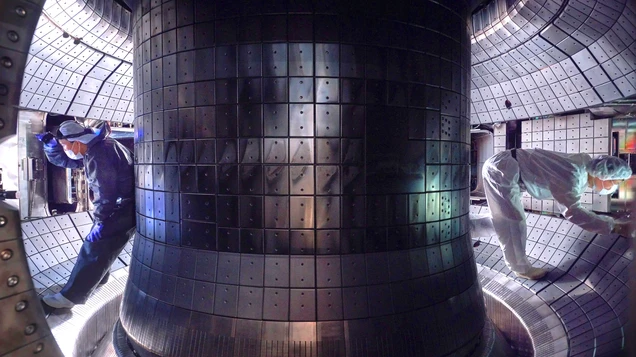The Breakthrough of South Korea’s Artificial Sun at 100-Million-Degree Plasma
The Korea Institute of Fusion Energy recently achieved a major milestone in the field of nuclear fusion Energy. By enhancing the KSTAR tokamak with a new diverter, scientists have enabled the artificial sun to sustain high-ion temperatures exceeding 100 million degrees Celsius for extended periods.
Understanding the kstar Tokamak
KSTAR, often referred to as an artificial sun because it facilitates nuclear fusion, is a compelling feat of scientific Innovation. Since its completion in 2007, the KSTAR tokamak has been at the forefront of nuclear fusion research, achieving its first plasma in 2008.
The tokamak is a doughnut-shaped device that harnesses plasmas, which are electrically charged gases brought to super-high temperatures and pressures, to achieve nuclear fusion. The installation of the diverter, a plasma-facing component, is critical in managing waste gas exhaust and impurities from the reactor.
Enhancing kstar with the New Diverter
The recently installed diverter, which utilizes tungsten material, has significantly increased the heat flux limit of the reactor. This material choice aligns with advancements made in the internationally significant ITER project and represents considerable progress in the pursuit of nuclear fusion Energy.
The successful implementation of the tungsten diverter paves the way for extended plasma operations within the kstar tokamak. Initially capable of sustaining plasma operations for about 30 seconds, the new diverter is anticipated to enable operations for 300-second periods by the end of 2026.
The Ongoing Journey of nuclear fusion Research
While the recent achievement in South Korea is indeed remarkable, it is vital to recognize that the quest for nuclear fusion as a reliable, zero-carbon Energy source is an ongoing journey fraught with challenges. Nuclear fusion research has seen significant strides, as demonstrated by the 2022 achievement at Lawrence Livermore National Laboratory.
The nuclear fusion community looks toward the future, with iter’s first plasma anticipated in 2025 and the achievement of first fusion slated for 2035. However, it is important to acknowledge that timelines and costs associated with such monumental projects may evolve as the research progresses, leading to potential delays and financial adjustments.
The Global Landscape of Tokamak Reactors
Apart from the kstar tokamak, there are over 50 other tokamaks operating worldwide, underscoring the global interest and investment in nuclear fusion research. Notably, the inauguration of the six-story JT-60SA reactor in Japan signals the continued momentum of tokamak projects across different regions.
With plasma experiments set to continue through February, the scientific community eagerly anticipates the insights gleaned from the ongoing research with kstar’s new tungsten diverter. This progress is a testament to the dedication and collaboration driving nuclear fusion research forward.
Source: gizmodotech








No Comments